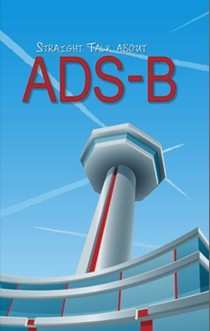Wed, Feb 25, 2015
EAA Received Assurances At ‘Equip 2020’ Meeting In D.C. That Experimental Aircraft Are Not Required To Install TSO ADS-B Equipment
Last week ANN reported that rule clarifications requiring ADS-B to be installed by the year 2020 could result in non-TSO ADS-B equipment being okay for experimental airplanes. EAA has just released an announcement that says they have now confirmed this is the case.

At an “Equip 2020” meeting involving the FAA, aviation groups, and industry officials this week in Washington, D.C., the agency restated their intent to ensure that the year 2020 mandate for ADS-B “out” installation would allow experimental category aircraft to install non-TSO equipment that meets TSO performance specifications. Such an allowance would support greater compliance with the mandate by reducing costs for such equipment and maintaining the freedom traditionally found within the experimental category.
“The FAA maintained the same position as during the EAA/FAA winter summit earlier this month: It wants to keep the pathway to compliance as simple as possible,” said Sean Elliott, EAA’s vice president of advocacy and safety, who attended the meeting along with Doug Macnair, EAA’s vice president of government relations. “It’s important that the innovation and flexibility available through the experimental category, which often leads to improvements for the entire GA fleet, is not hindered by a specific mandate such as an ADS-B TSO requirement.”
EAA has committed to helping the FAA with language that would help clarify and provide guidance for experimental category aircraft owners and builders for ADS-B equipment and installation. Historically, builders and owners of experimental aircraft have been able to install avionics that meet the performance standards of certified equipment but are not specifically approved by the FAA. Even in IFR-equipped aircraft, avionics do not have to be approved devices and can be installed by the aircraft builder or by an A&P mechanic.
While the 2020 ADS-B mandate applies to all aircraft that will operate within airspace that requires an altitude encoding transponder, there are unique provisions and opportunities within the amateur-built regulations that may allow owners of experimental aircraft to meet the requirements with greater flexibility and potentially lower cost. That could specifically mean, for instance, the ability for a builder to individually install certified ADS-B systems, or seek out non-certified ADS-B systems that meet the mandate’s performance standards.
(Image from file)
More News
Also: 1st-Ever Space Crime Was a Fraud, IAE Buys Diamonds, Kennon Bows Out, Perseverance Rover An interesting moment came about this past Sunday as ANN CEO, Jim Campbell, noted tha>[...]
Have A Story That NEEDS To Be Featured On Aero-News? Here’s How To Submit A Story To Our Team Some of the greatest new stories ANN has ever covered have been submitted by our>[...]
From 2023 (YouTube Edition): Deviation from the Historical Mean Racine, Wisconsin-based DeltaHawk is a privately-held manufacturer of reciprocating engines for aircraft and hybrid >[...]
Smoke Began Entering The Cockpit During The Landing Flare, And Then The Pilot Noticed Flames On The Right Side Of The Airplane Analysis: The pilot reported that about 30 minutes in>[...]
Remote Communications Outlet (RCO) An unmanned communications facility remotely controlled by air traffic personnel. RCOs serve FSSs. Remote Transmitter/Receivers (RTR) serve termi>[...]
 Airborne 11.24.25: ANN's 30th!, Starships V3 Booster Boom, Earhart Records
Airborne 11.24.25: ANN's 30th!, Starships V3 Booster Boom, Earhart Records ANN FAQ: Submit a News Story!
ANN FAQ: Submit a News Story! Classic Aero-TV: DeltaHawk Aero Engine Defies Convention
Classic Aero-TV: DeltaHawk Aero Engine Defies Convention NTSB Final Report: Glasair GlaStar
NTSB Final Report: Glasair GlaStar ANN's Daily Aero-Term (11.22.25): Remote Communications Outlet (RCO)
ANN's Daily Aero-Term (11.22.25): Remote Communications Outlet (RCO)



